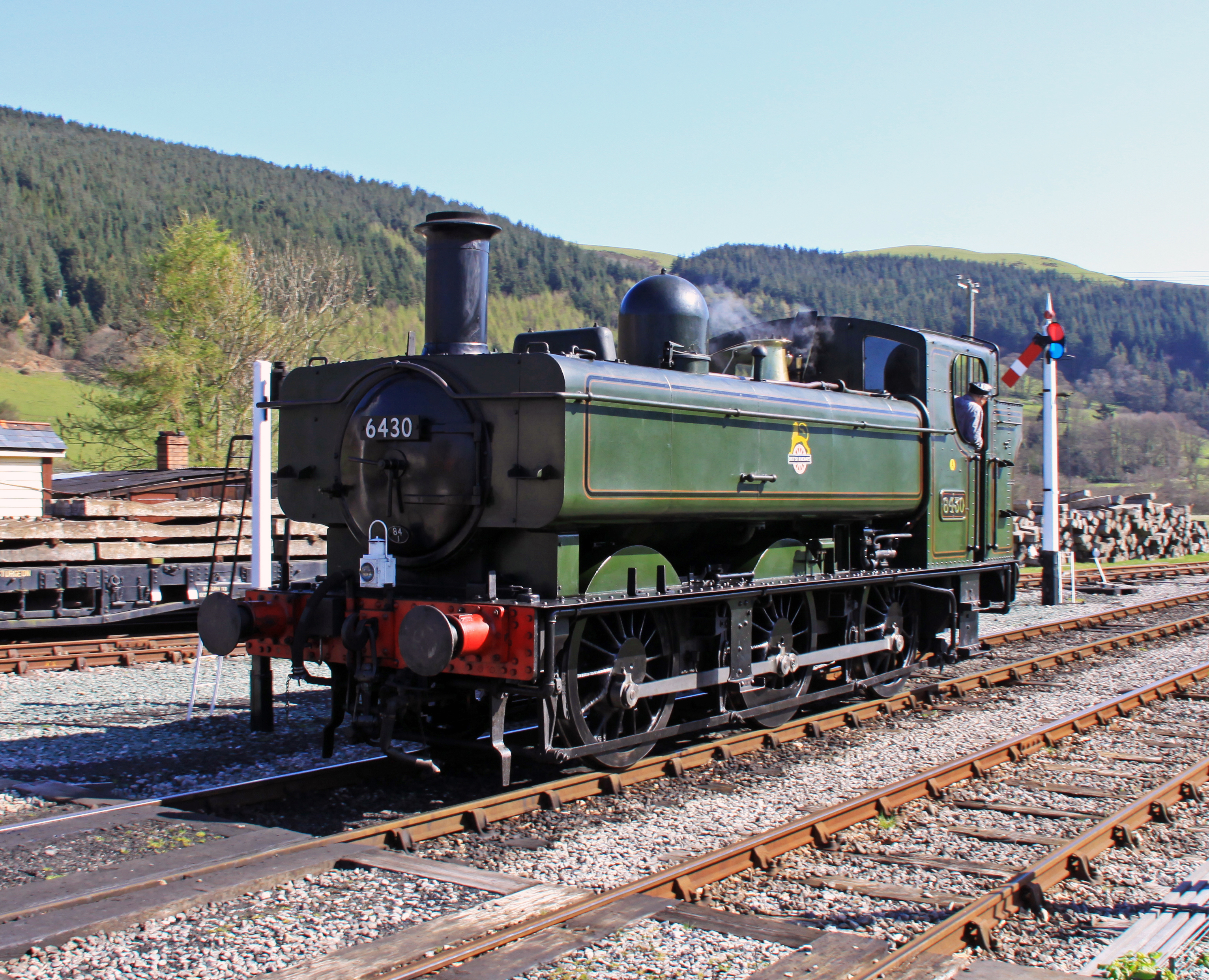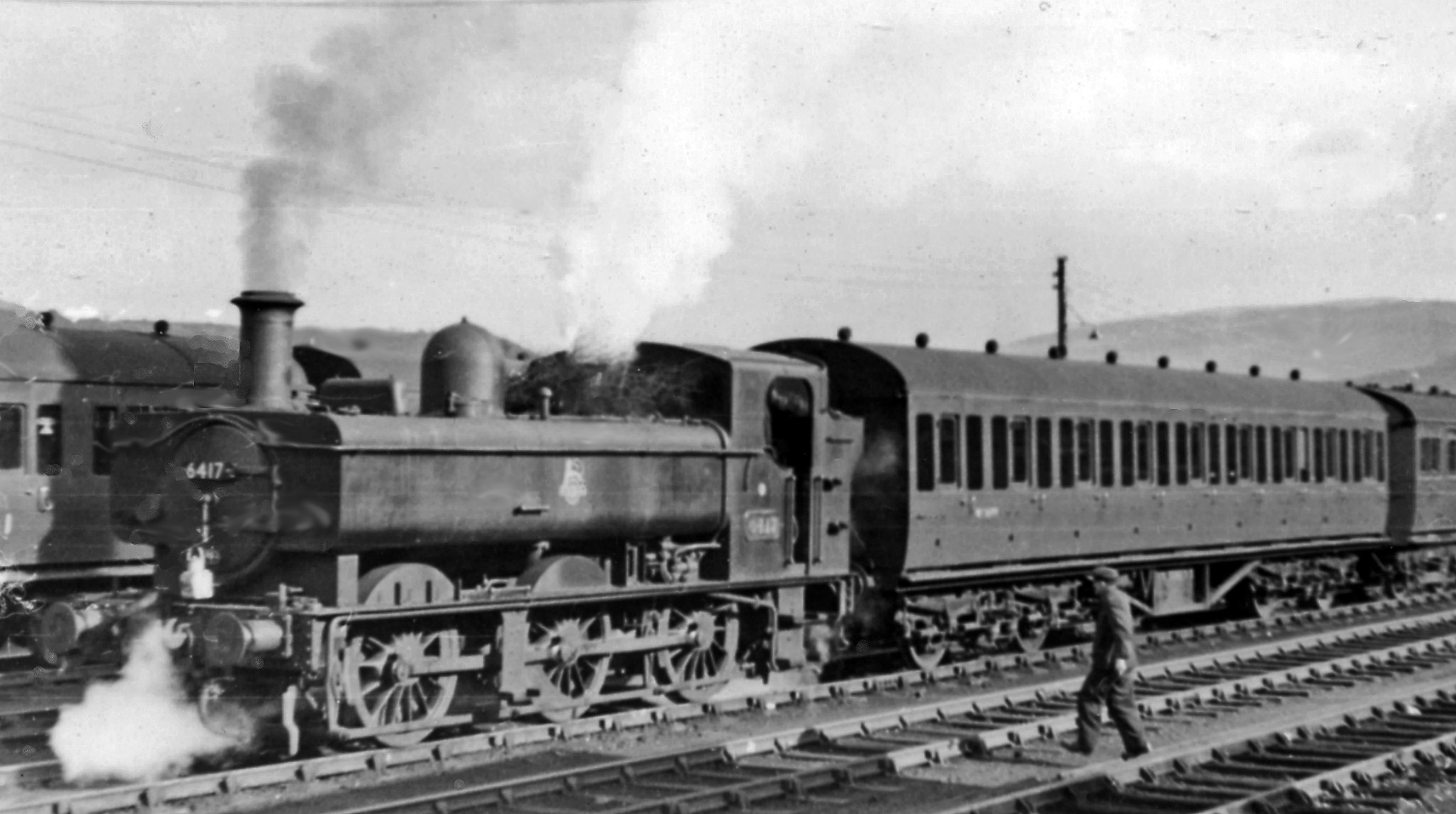6400 Class (Steam locomotives)
Enlarge text Shrink text- Work cat.: Sixsmith,I. 54XX, 64XX, 74XX, 2013.
- Wikipedia, Nov. 20, 2013:under GWR 6400 Class (The Great Western Railway (GWR) 6400 Class is a class of 0-6-0 pannier tank steam locomotive introduced by Charles Collett in 1932)
The Great Western Railway (GWR) 6400 Class is a class of 0-6-0 pannier tank steam locomotive introduced by Charles Collett in 1932. All 40 examples were 'auto-fitted' – equipped with the remote-control equipment needed for working autotrains. The 1936 GWR 7400 Class was a similar class, without the autotrain apparatus, but with a higher boiler pressure of 180 psi, providing a small but useful increase in power. An initial build of 30 in 1936-1937 was added to by British Railways in two batches each of ten locos in 1948 and 1950. These were destined for a short life, the briefest being only nine years. A minor visual difference between the 5400 and earlier 6400, and the later series of 6400, with the 7400 classes was at the join between cab and bunker. The 5400 and early 6400 had an arc whereas the later 6400 and the 7400 class was straight. The early locos also had a lip at the leading edge of the cab roof, whereas the later locos had a plain corner edge. Both classes were closely related to the 1930 GWR 5400 Class, which was in turn an evolution of both the Armstrong 1874 GWR 850 Class and the Dean 1891 GWR 2021 Class. Thus the basic design was almost sixty years old when new, the 4 ft 7+1⁄2 in (1.410 m) driving wheels being the main distinguishing factor, apart from the more modern profile. There were also superficial similarities with the GWR 645 Class as extant in the 1930s, that also had 4 ft 7+1⁄2 in (1.410 m) wheels and 24 in (610 mm) stroke cylinders (and by then pannier tanks and full cabs).
Read more on Wikipedia >
 Topic
Topic





